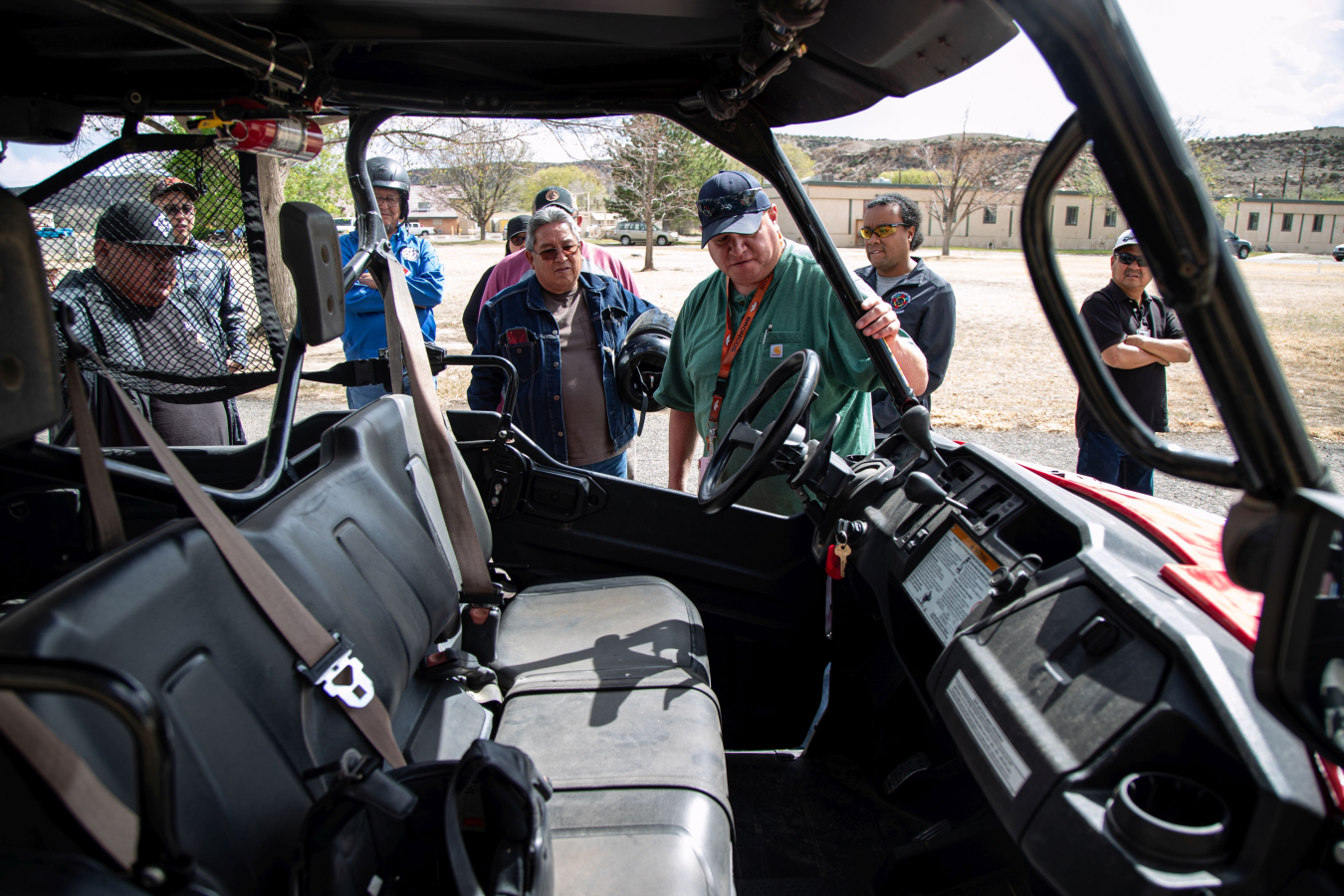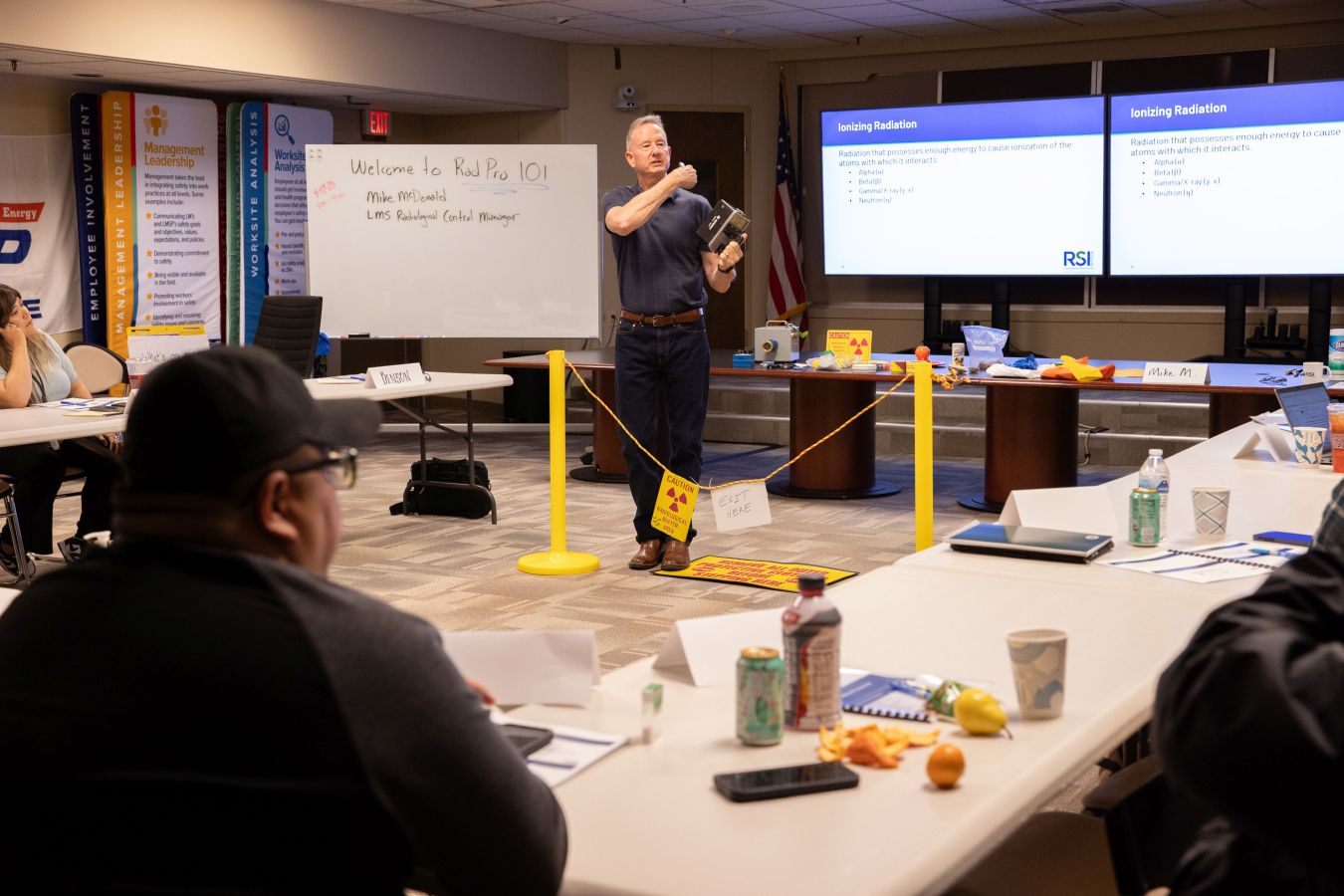Courses include safe operation of utility terrain vehicles, instruction on protection from radiation
May 6, 2025At the request of Navajo and Hopi Tribes, the U.S. Department of Energy (DOE) Office of Legacy Management (LM) offered two specialized training courses to Tribal partners during a recent visit to Grand Junction, Colorado.
From April 15-17, the first of three scheduled meetings in 2025 took place at LM’s Field Support Center (LMFSC) in Grand Junction. Traditionally, LM meets with its Hopi and Navajo partners three times a year to foster a collaborative environment to exchange information, provide status updates, share technical topics, discuss upcoming key milestones and activities as well as socialize challenges, trends and opportunities. The new training sessions offered to Tribal partners in April were the first of their kind.
LM Support Partner (LMSP) Training Specialist David Janssen, Safety and Health Professional Ben Martinez, and Fleet Operations Specialist Andres Martinez provided hands-on instruction on the safe operation and maintenance of utility terrain vehicles, which are commonly used to efficiently support various field operations on Navajo and Hopi lands and sites.
LMSP Radiological Control Manager Mike McDonald presented a seminar titled “Radiation Protection 101” for the Tribal partners who came from various Tribal government offices, primarily charged with cleanup and monitoring of sites once used in uranium mining, milling and production on Tribal lands.
Janssen said the goal of the presentation was to provide participants with information on what ionizing radiation is, where it comes from, how it damages living tissue, and how much it takes to cause harm to humans. McDonald discussed the risk associated with occupational radiation exposure compared to other industries and everyday activities and how people can protect themselves in an occupational setting.
With this information, attendees were provided the foundational basis on which they can evaluate the risk associated with exposure to low levels of ionizing radiation, both from background and occupational sources, Janssen said.
“Along with this knowledge is an explanation of the LM mission as it pertains to the protection of human health and the environment,” he said. “Part of this discussion is the history of where we came from and where we are at now.”
Representatives of the Hopi and Navajo Tribes requested the trainings, and LM was excited to afford “an enriching opportunity to provide them,” said LMFSC Office Manager Paul Kerl.
“The trainings fulfilled a vision we collectively established over a year ago between LM and our Tribal partners,” Kerl said.
During a previous triannual session, Karen Bedonie of the Navajo Abandoned Mine Lands Department (NAML) asked what training tracks LM used to train personnel who work at sites under the authority of the Uranium Mill Tailings Radiation Control Act (UMTRCA).
“The UMTRCA community of practice is truly a niche field, and most training takes place on the job,” Kerl said. “We realized that our existing in-house training would be valuable to our partners, so we identified the training that best aligned with our mutual interest and needs.”
LM then systematically reviewed the content to convert the training curriculums from inward facing to be more presentable to external audiences.
“With that process complete, we finally were able to deliver on the promise to help afford training opportunities to those we work so closely with in the Tribal communities,” Kerl said.
“The training is also a good refresher for those who have been working in this field for some time,” he said. “It’s important to continue to fold in lessons learned into the training to keep it relevant and state of the art.”
LM staff meets regularly with its Tribal partners, who are included in outreach activities, document review and participation in annual site inspections, and site security visits at four former uranium-processing sites on the Navajo Nation.
LM relies on its partnerships with the Navajo and Hopi governments, such as the NAML program. This Tribal department works closely with LM and its partners to monitor daily activities occurring at the four sites.
Cory Dayish, an environmental specialist with NAML in Shiprock, New Mexico, said he was happy to take part in the trainings in Grand Junction.
“I’m getting a lot of information about the different radiation monitoring and how to interpret that for community outreach and transmit that to the Navajo Nation,” he said. “I’m still learning and looking for the information that’s most helpful.”



